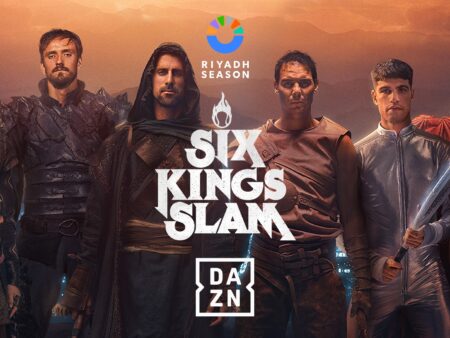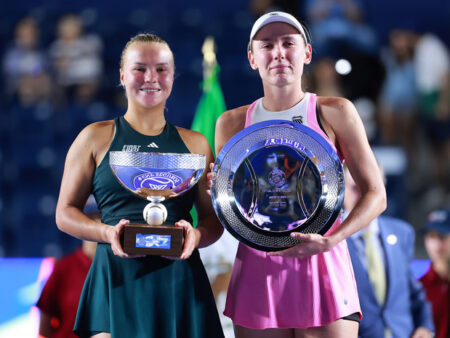In an era where every punch thrown is dissected and every card scrutinized, the concept of a “stacked” boxing event feels like a modern triumph. Yet, for those with a longer memory, the 1990s stand as a testament to a promoter who perfected this art form long before the phrase became a marketing buzzword: Don King.
The King`s Gambit: More Than Just Main Events
While often a figure of controversy, Don King possessed an undeniable genius for matchmaking. He wasn`t just selling a main event; he was selling an entire evening of high-stakes drama. With a sprawling roster of world champions and top contenders under his promotional banner, King faced a logistical puzzle: how to keep all his stars active and engaged? His solution was simple, yet revolutionary for its time: put them all on one card.
These weren`t mere `tune-up` fights designed for a champion to coast. King`s undercards were frequently packed with championship bouts, grudge matches, and genuine crossroads fights that could easily have headlined events on their own. For the discerning boxing fan, arriving at the venue from the opening bell wasn`t just advisable; it was essential to witness the full spectacle.
“Revenge: The Rematches” – A Quadrilogy of Champions
Perhaps the most audacious example of King`s vision was the “Revenge: The Rematches” card staged at the MGM Grand in Las Vegas in May 1994. Its premise was breathtaking: an unprecedented four world-title rematches, topped by a fifth standalone championship bout. This wasn`t just a card; it was a festival of scores to settle.
- Julio Cesar Chavez vs. Frankie Randall II: The main event saw Chavez attempting to regain his WBC super-lightweight title. The fight`s conclusion, with Chavez winning by technical decision after a head clash, left a somewhat hollow taste. Yet, it was merely the appetizer.
- Simon Brown vs. Terry Norris II: The chief support delivered. Brown had dramatically upset Norris in their first encounter. In the rematch, Norris, having learned his lesson, outboxed the dangerous Brown with intelligent movement, refusing to stand and trade. It was a masterclass in strategic adjustment.
- Gerald McClellan vs. Julian Jackson II: This middleweight rematch was pure, unadulterated violence. Their first fight was a barnburner, and the sequel, lasting a mere 83 seconds, was an explosion of power, with McClellan looking sensational. The crowd roared, oblivious to the tragic irony that this magnificent, destructive power would, just nine months later, lead to a life-altering injury for McClellan. A truly chilling juxtaposition of triumph and fate.
- Azumah Nelson vs. Jesse James Leija II: Following a controversial draw in their first outing, Leija delivered the performance of his life, dropping Nelson and winning a unanimous decision to claim the WBC super-featherweight title. This was a narrative of redemption perfectly executed.
- Ricardo `Finito` Lopez vs. Kermin Guardia: As if four rematches weren`t enough, the card also featured the undefeated Ricardo `Finito` Lopez defending his WBC minimumweight title against another unbeaten challenger, Kermin Guardia. Lopez`s quiet brilliance was a constant on many of King`s deeper cards.
Saving the Day: The Madison Square Garden Debacle of `97
King`s deep undercards often served as insurance policies. In August 1997, a highly anticipated main event at Madison Square Garden featuring Felix `Tito` Trinidad against Terry Norris collapsed, first due to litigation, then due to injury. Australia`s Troy Waters stepped in on three weeks` notice for Trinidad, resulting in a first-round mismatch.
But the true value for money was, once again, lower down the bill:
- Julio Cesar Green vs. William Joppy: Dominican slugger Green pulled off a significant upset, winning a unanimous decision over the defending WBA middleweight champion Joppy in a thrilling, back-and-forth contest that saw both fighters hit the canvas. It was the kind of gritty, competitive battle that defines a great undercard.
- Wilfredo Vazquez vs. Roque Cassiani: Puerto Rico`s Vazquez retained his WBA featherweight title, continuing his pursuit of a showdown with Naseem Hamed – a chase that ended, famously, in Hamed`s favor.
- Ricardo `Finito` Lopez vs. Alex Sanchez: Lopez delivered another knockout performance, solidifying his reputation as one of boxing`s most dominant, albeit understated, champions.
- Christy Martin vs. Isra Girgrah: In what many considered the `show-stealer` of the night, Martin and Girgrah engaged in a furious, crowd-pleasing war, underscoring King`s willingness to feature compelling women`s boxing.

The Chavez-Taylor II Undercard: Another Feast for Fans
September 1994 brought another Don King masterclass beneath the highly anticipated Julio Cesar Chavez vs. Meldrick Taylor rematch. Four world title fights adorned the bill, creating an evening of non-stop action:
- Felix Trinidad vs. Yory Boy Campas: A rising star, Trinidad, showed resilience by getting off the floor to stop Campas in a welterweight title shootout.
- Gabriel Ruelas vs. Jesse James Leija: In what many hailed as the fight of the night, Ruelas battled Leija with “furious intent,” dropping him in the second and absorbing a knockdown himself in the fifth before winning the WBC super-featherweight title in a classic brawl.
- Frankie Randall vs. Juan Martin Coggi: Randall, fresh from his main event rematch with Chavez, took on Argentina`s Coggi for a super-lightweight title.
- Ricardo `Finito` Lopez vs. Thai Challenger: Lopez continued his dominant reign, dispatching his opponent in under two minutes.
- Vincent Pettway vs. Gianfranco Rosi II: This junior middleweight title rematch provided a short but decisive ending, with Pettway dropping Rosi heavily in the fourth. A ringside anecdote involved veteran promoter Mickey Duff betting the “over” – a wager that, alas, did not come to fruition, much to the amusement of those familiar with King`s propensity for explosive finishes.
The Enduring Legacy: Value Over Everything
So, why did Don King stack his cards with such an embarrassment of riches? The answer is multifaceted. He controlled a significant portion of boxing`s top talent and needed platforms for them to fight. But fundamentally, it was about delivering an unparalleled experience. In an era before streaming services and curated playlists, a boxing event was a singular experience, and King ensured it was a monumental one.
These weren`t just long nights; they were *deep* nights, offering continuous, high-quality, meaningful bouts. While modern boxing often grapples with fragmented promotional landscapes and escalating fighter purses, King`s 90s offerings serve as a poignant reminder of a time when the spectacle extended far beyond the marquee fight. They underscore the timeless appeal of true competition and the sheer joy of witnessing multiple legends and champions, all on the same stage, delivering value that resonates to this day.
Perhaps, in an increasingly competitive sports entertainment market, there`s a lesson to be learned from the old showman: sometimes, giving the fans more than they expect is the most effective promotional strategy of all. And Don King, for all his eccentricities, understood that profoundly.










